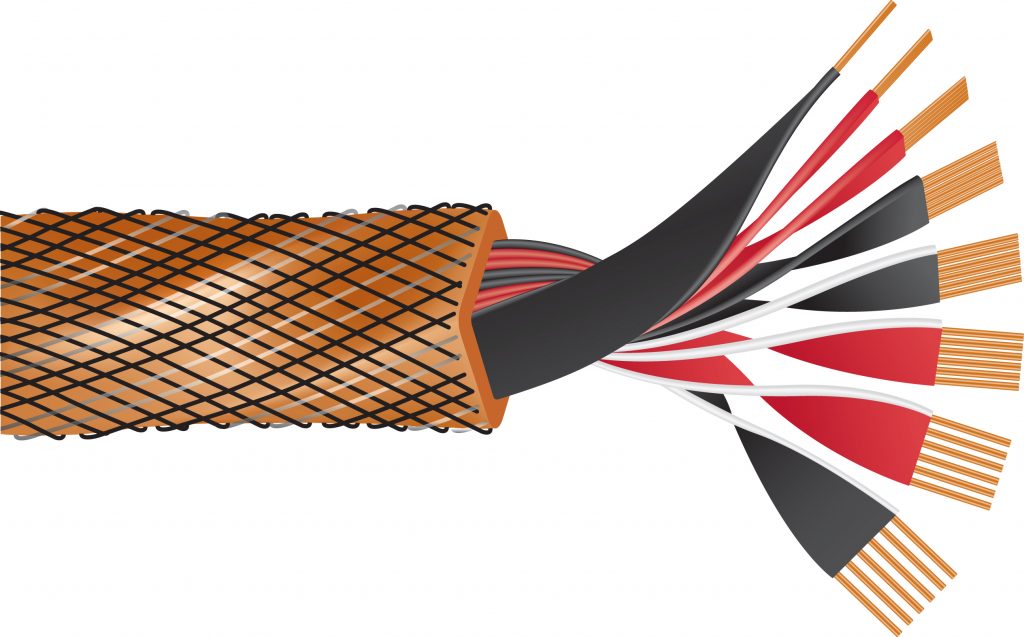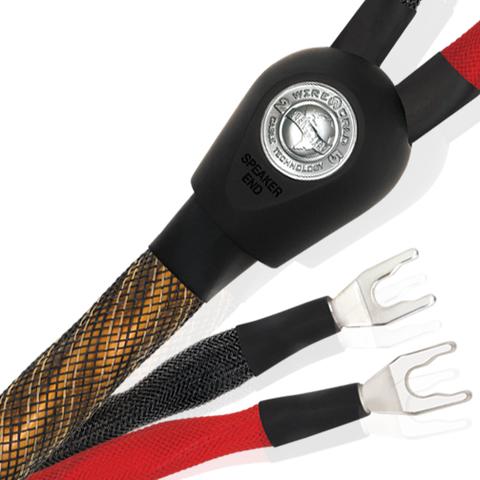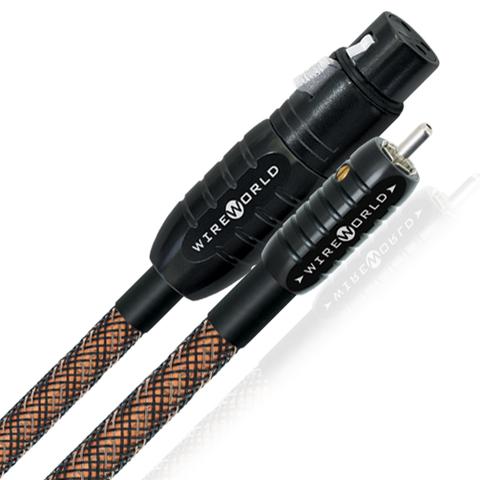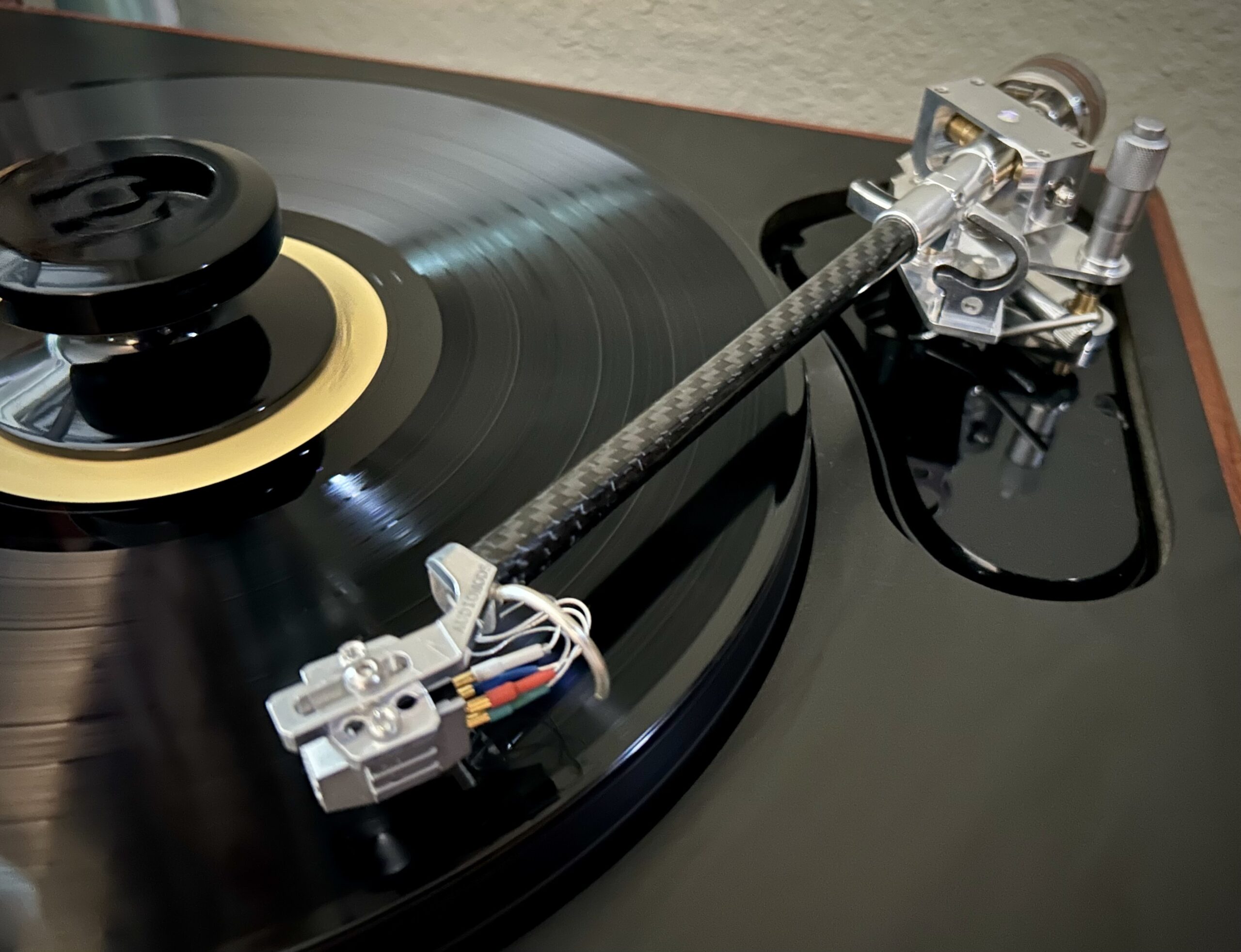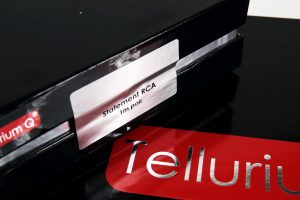When I have conversations with my friends about Wireworld, the level of recognition is almost universal as this is one of the early companies that pioneered the field of high-performance component cabling. Yet if you dig a bit deeper and ask what they know, you often find that many hobbyists do not have an in-depth understanding of the company, or what their products offer. You might get the response of "well, they make cables," or perhaps you will hear, "they make pretty expensive cables," and variations of those answers. The average person who is planning on spending a significant amount of coin on his/her cabling purchases is going to do some research. Thanks to the Internet there is a bushelful of information available. Anyone can quickly find that David Salz is the founder of Wireworld and that he has been perfecting his craft for almost 40 years. Keep on reading, and you will locate information regarding proprietary elements such as Composilex 3 dielectric, DNA Helix wire geometry, and Silver-tube RCA connectors, all of which are patented components that are integral to the products that Wireworld builds. Dig a little further, and you can find out about "cable polygraphs," which is the process of making direct connections between components with plug adapters, which creates the ultimate reference to which all cables can be measured against. After all, can there be a better cable than no cable? These tests eventually led to the development of The Comparator, a custom designed device that allows for true double-blind tests of cables. While these are fascinating tidbits of information to read, they do not tell the how, or why David’s designs are consistently excellent. More importantly, it does not articulate exactly what his vision is for moving forward with future products. One afternoon I was fortunate enough to have a phone call with David regarding the new Eclipse 8 speaker wire, and the conversation veered into a discussion of eddy current loss and how they relate to signal transfer. David referred me to a document written by Koichi Hirabayashi, the founder of Mogami, who referenced an article created by Mr. Akihiko Kaneda of Akita University. The essence of these writings is distilled to eddy current losses, skin effects, and the use of double-blind tests to verify and evaluate the results of this phenomenon in the audio band. This is where the work of David Salz and Wireworld products gets interesting, as his designs delve deep into the world of eddy currents and the effects they have on cables.
Throughout the course of his career, David Salz has worked towards designing the most neutral audio cables possible, and his testing methods have determined that eddy current losses are the most problematic issue plaguing signal transfer through wire conductors. David considers the effects of eddy currents to be insidious, contending that they cause colorations and the loss of detail we experience with cables; and therefore, touch every aspect of music playback that we hear. Essentially an eddy current is a closed loop of electrical current in a length of conductor that is created by the changing magnetic field of the wire. An example of the effect of this phenomenon is magnetic brakes in electrical motors, as the eddy currents are used to bring the rotors to rest quickly and safely. When eddy currents exist in audio cables, they compromise transient response, which diminishes or smears spatial timing cues and subtle detail that is the foundation of the texture of music. David concluded that thick, twisted wires maximized the effects of eddy currents, and therefore designed a geometry where wire strands were laid out in thin parallel groups, which create a stable and stronger magnetic field within the cable.
The strength and stability of the magnetic fields are defined by the cable geometry being used, which determines how accurate a speaker cable is going to be in relation to the audio signal it carries. Yet there are practical aspects such as flexibility, overall weight, and cost that come into play when developing a cable design. All these considerations need to be weighed against creating what would be considered the theoretically perfect audio cable. This balancing act of real-world constraints is done by addressing raw wire composition, the geometry of the conductors inside the cable, the effects of the dielectric coatings, and the conductive properties of the termination ends. David Salz has just released his latest advancements in cable design with the Series 8 products, and I had the good fortune to compare the new Eclipse 8 speaker cables against the previous generation Eclipse 7 I currently have in my reference system.
A 2.5-meter set of Eclipse 8 speaker wire sells for $1800 with a set of single terminations, which is a slight increase of $250 over the previous model. However, there are several notable upgrades incorporated into this latest offering, and it would be prudent to explore these differences. This speaker cable is based on Ohno Continuous Cast copper wire, as was the previous generation cable, however the strand groups have been increased from 32 to 48 groups. The Eclipse 8 is now a 9-gauge cable, however the reason for the increased number of conductors is to strengthen and improve stability of the magnetic field, as wire gauge alone does not provide meaningful improvements to sound quality. The increase of both strand groupings and wire proximity inside the cable is the primary vector that David is using to minimize the effects of eddy currents in his designs.
Composilex 3 insulation is a proprietary blend of materials that minimizes the effects of triboelectric noise, which is caused by a static charge and discharge cycle at the point where the wire contacts the insulation. Dielectric absorption is the conventional issue referenced when discussing wire insulation, yet none of the standard insulation materials can have minimal dielectric absorption and low triboelectric noise. In my conversation with David he mentions that every dielectric material has differences in absorption rates, and that means no single material will effectively isolate the wire properly. Minimizing the adverse effects of triboelectric noise have been the focus of the various Composilex formulas David has developed over the years, and the current formula not only blends several different ingredients, but also stratifies layers of materials within the coating. The result is a lower noise floor for this latest generation of cable, which translates into greater detail, improved spatial presentation, and coherent harmonic structure of the music. As a side note, improved cable flexibility is another benefit gained with the use of Composilex 3, especially when combined with a slight refinement of the DNA Helix wire geometry. Even though the gauge of Eclipse 8 speaker cable has increased, it is smaller in overall diameter when compared to Eclipse 7 and is easier to route behind the audio cabinet or speakers.
The DNA Helix wire geometry is the primary weapon David utilizes in his attack against eddy current propagation. Since these currents develop due to changes in the magnetic field of wire, it makes sense that a stable wire matrix is critical to minimizing these effects. Conventional cable design twists wire strands together to enhance RFI and noise rejection, however the unwanted side effect is the propagation of eddy currents. Wireworld cables uses layers of flat conductors that are parallel in orientation, and this arrangement results in a highly stable electrical field within the cable, which in turn minimizes these detrimental effects.
Wireworld developed the Uni-Term termination system for their speaker wires for obtaining the best possible connection and providing a higher degree of user friendliness for the customer. This configuration allows the owner the option to select between either banana or spade terminations. A set screw allows for either type of connector to be turned out of a barrel that is permanently attached to the wire end. This means an owner never has to wish they had a different connector on their cables, and after a few minutes the conversion process can be completed. There is a choice between either silver or silver and gold-plated oxygen free copper ends. Since my speakers allow for bi-wiring, I upgraded to this termination for the Eclipse 8 cable, which adds a $100 to the price for the additional ends.
I keep my audio gear in a Salamander Designs Geneva audio credenza cabinet on the side wall, and this means I use a 24-foot run of speaker wire. I certainly appreciate the increased flexibility of the Eclipse 8 over the previous generation wire, as space is tight between my cabinet and the wall, and I must make several turns to reach the speakers. A First Watt F7 amplifier is housed in the bottom shelf of the cabinet, and even though this wire is a large diameter, I had no issues getting it routed behind the cabinet and connected to the amplifier. The amp is paired with a Plinius Tautoro pre-amplifier, and Larry Smith sent along a couple of pairs of Eclipse 8 interconnects so I could have a complete presentation of the Wireworld vision for audio playback. Speakers are JBL 4365 studio monitors, and digital source is an Audio Magic Kukama DAC and Mac-Mini computer server. Vinyl is spun on a Technics SP10 MK II in custom plinth/Riggle String Theory arm/ZYX 4D cartridge, which is fed into an Esoteric E-03 phono stage. A PS Audio P10 Regenerator produces clean AC power, while its distributed by PI Audio Group power cords.
One aspect I have always appreciated about Wireworld cables is that the break in times for their wire are relatively short, and the Eclipse 8 speaker cable was true to form as I found it to be fully run in at the 60-hour mark. When compared to the previous generation cable, the Eclipse 8 has an increased level of resolution, with instruments and performers being noticeably more vivid and having a greater degree of presence. Tonally the lower midrange is harmonically denser, and this contributes to an increased level of realism with this cable in the system. I spent one evening listening to a 45 RPM Blue Note reissue of Lou Donaldson (The Time is Right; Lou Donaldson, Blue Note Reissue 45 RPM AP 84025) and on the track "The Nearness of You" I was completely captivated by the tone, texture, and easy flow of Blue Mitchell’s muted trumpet. Then Donaldson’s sax passages just expanded out of nothingness on the other side of the soundstage, and contained a palpable presence of tonal richness that highlighted the brass and reed elements of the instrument. While this whole album is outstanding, the Eclipse 8 speaker wire is instrumental to taking my system to another level and provides a dose of refinement that I wholeheartedly appreciate.
The Eclipse 8 also excels at unveiling the finest of details in music yet manages to accomplish this without damaging the harmonic structure of the piece. For instance, on "Blue Spanish Sky" (Heart Shaped World; Chris Isaak, Reprise Records 9 25837-2), I can clearly hear all the subtle detail contained in this piece. The acoustic guitar passages are delicate, and it is possible to hear every aspect of the subtle fret and string work throughout this piece. The brush strokes on the drums by the percussionist come through clearly, and the level of realism is spooky. The trumpet passages are captivating, as they emerge from a layer of blackness that is created by a moment of silence written into this composition. Disembodied vocals and a distant string section floats distantly within the soundstage, the Eclipse 8 wire does a fine job of maintaining the definition and clarity of these passages, and still maintains the volume ratios between the primary and the secondary instruments that are mixed in for artistic effect. In the past I have heard other cable systems add an artificial level of detail to this song, and in doing so create an overblown presentation of acoustic space. However, the Eclipse 8 speaker cable is quite adroit at maintaining the proper perspective of this song in terms of tonal balance, detail, and space. All these incremental elements contribute to a realistic presentation of a musical performance.
The discussion of dynamic contrasts within audio reproduction is usually reserved for the arena of amplification or speaker efficiency. This is a subject matter that is rarely broached in the venue of cabling, yet it should be relevant, especially regarding micro-dynamic shading contained within music is resolved. With the noise floor being lowered in the Eclipse 8 speaker cable, one audible effect is a greater expression of dynamic contrasts that are woven throughout a song, and this is markedly different than the low-level details that I discussed in the previous paragraph. For instance, on "Trans-Island Skyway" (Kamakiriad; Donald Fagen, Reprise Records B000002MIY), the opening drum passage shows excellent scale and dynamics between the cymbal work, strikes to the snare drums, and the more powerful kick drum notes. The bass guitar has not only excellent tone, it also has that jump factor which creates a distinct sound that separates it from other instruments in the bass region. This song has a powerful flow of energy that passes through it, that some would refer to as a boogie factor, and it should be recognized that Fagen is a master of this type of dynamic expression. The Eclipse 8 speaker cable is quite capable of relaying this kind of information, and this allows my system to have a holistic presentation that conveys the dynamic interplay of every instrument brought to bear in this piece.
The Eclipse series of speaker wire have a long tradition of superb performance in the lower octaves, and the latest generation cable lives up to this storied pedigree. The Eclipse 8 speaker wire utilizes 50% more strand groupings over the previous 7th generation design, along with an increase to an aggregate 9-gauge wire size. The combination of these traits has positive benefits in terms of improved current transfer, which results in a noticeable improvement in bass response. "High Plains Drifter" or "3-Minute Rule" (Paul’s Boutique; The Beastie Boys, Capitol Records C2-91743) are great songs to evaluate the ability of the Eclipse 8 speaker cable to carry the load and facilitate the tactile and physical power of the bass region. To ensure I had enough power on tap, I swapped in an H2O Audio 250 Signature amplifier, which is rated at 250 WPC and 40 amps of current. The Eclipse 8 wire held up its part of the bargain, as the bass was primal and impactful, with a physical presence that could not be ignored. Not only were the bass lines guttural in nature, it still maintained excellent tone which means that when more refined bass instruments are being reproduced the result is a detailed and expressive element being revealed.
The primary focus of this article is the Eclipse 8 speaker wire; however, I would be remiss if I did not devote a paragraph to the interconnects in this series. These excellent cables could easily be the focus of a complete review, however in an attempt at brevity I will say that all the strengths of the speaker wire carry over to the interconnects. I found the Wireworld cables to have excellent tonal balance from top to bottom, and have an expressive nature in terms of dynamic interplay within music. As with the speaker wire, the interconnects are built with parallel layers of Ohno Continuous Cast Copper, and the characteristics of this wire produce a cable that has an organic nature that copper based cables are known for. Vocal passages are rendered in remarkable texture and have an expressive nature that compels me to listen a bit more intently than I might with a lesser cable. Actually, the Eclipse 8 interconnects can stand alone on their own merit, and if you need a quality interconnect, then this one is worth auditioning.
David Salz has been designing audio cables for close to 40 years, and during that time Wireworld cables have been recognized for offering genuine value at whatever price point is being discussed. The entry level Stream 8 speaker wire can be purchased for $95 for an 8-foot pair, or you can spend $22,400 for the top of the line Platinum Eclipse 8 speaker wire. There is a multitude of offerings between those two points, and in practical terms there is a choice for every budget and application. The Eclipse 8 speaker cable represents the most affordable price point in the reference series of Wireworld products. While I would never argue that $1800 for a pair of speaker wires is inexpensive, when you consider the investment in research and painstaking design work; and consider the contribution this wire has on sound quality, the value of this cable becomes readily apparent. The Series 8 products represents the accumulation of all the knowledge and experience that David Salz has earned over the years, and this is a refinement of a design that results in an evolutionary improvement of a fundamentally sound product. The Eclipse 8 speaker cable is based on 48 strand groups of Ohno Continuous Cast 7N copper wire. The Composilex 3 dielectric sheath is a proprietary blend of several materials that results in a reduced noise floor and a greater immunity to RFI interference. The Eclipse 8 wire also contains the latest tweaks to the DNA Helix geometry, which increases the stability and strength of the magnetic field in the cable. The goal of the latest round of improvements to the Eclipse design is a reduction in eddy currents within the wire, and minimize the effects of triboelectric noise, which result in greater detail, dynamic contrasts, and improved focus of instruments and performers. When I compared the Eclipse 8 cables to the previous 7th generation product, I found improvements in a whole slew of areas, yet it still maintains all the positive qualities of the previous design. There is little doubt that the Eclipse 8 series of cables are high performance products, and if you are looking for an excellent all-around cable, then do yourself a favor and seek out a set to listen to.
Wireworld Eclipse 8 Loudspeaker Cables
Retail: $1800 (2.5-meter set)
Wireworld




